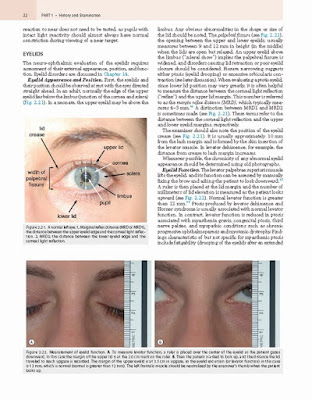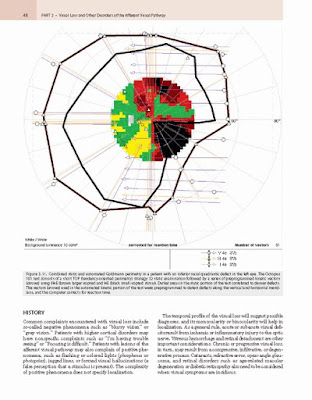by Grant T. Liu MD (Author), Nicholas J. Volpe MD (Author), Steven L. Galetta MD (Author)
The fear that books are going away is over. People are still buying books. Despite the wealth of information available on the internet, both electronic and print books are still popular. A medical textbook with useful guidelines, illustrations, and references carefully organized within a one volume text still seems helpful.
We wrote in the second edition’s preface that our book could not be encyclopedic, but instead we could offer thoughtful approaches to the diagnosis and management of neuroophthalmic disorders. We were glad to see that the book, like the first edition, was well-received and widely used. In our travels we have noticed copies of both editions on bookshelves in clinics and offices throughout the world. Our colleagues continue to tell us that they recommend our book as essential reading for their fellows, residents, and students.
In order for a third edition to maintain this success, however, the book had to grow. The second edition benefitted from incorporating the colored fundus photos and anatomical drawings within the text and from the addition of supplemental videos. For the third edition, it would have been insufficient merely to update the references. Also, our numerous additional administrative responsibilities have limited our time for academic pursuits, so we needed help. Thus, in an attempt to expand the depth and breadth of the book, we asked some of the former Penn Neuro-Ophthalmology fellows to update (but not rewrite) many of the chapters and add their expertise. These individuals had been our trainees but had gone on to establish themselves as independent leaders and have distinguished themselves in neuro-ophthalmology. These authors are listed in the table of contents and at the beginning of the individual chapters to which they contributed. The three of us are now editors of the book as well as authors, and the book title now has revised with an apostrophe added: “Liu, Volpe, and Galetta’s Neuro-Ophthalmology: Diagnosis and Management.”
The field has expanded rapidly, and we have tried to incorporate all the developing trends including the proliferation of new technologies, such as optical coherence tomography, which have become essential to all our practices. But at the same time we made every effort to preserve the true fundamentals of neuro-ophthalmology: history, examination, differential diagnosis, and management. Therefore, the format of the book, with four parts and 19 chapters, remains the same as it was in the first and second editions. The figures on the book cover reflect how our diagnosis and management today depends upon our examination, neuroimaging, and new technologies.
Because the book is still designed for nonexperts evaluating neuro-ophthalmology patients, we agreed with our publisher that the size of the third edition should not increase in order to maintain its usefulness, popularity, and cost. Therefore, we set the goal of keeping the word, reference, table, and figure counts relatively similar to second edition’s. This task was difficult for our contributors and us, as we had to eliminate the same number of words and references that we added. On the other hand we were forced to identify and remove outdated text and articles (particularly those published before 2000 unless classic), streamline wordy passages, and replace substandard and previously published figures with more illustrative and original ones. It was also our job as editors having multiple contributors to maintain consistency between the chapters in terms of style, format, and content and to keep redundancy to a minimum.
Because video examples of eye movement and eyelid disorders, pupillary abnormalities, and examination techniques dynamically enhance the text, and having the videos online instead of on a DVD gave us a bit more flexibility, this edition features almost twice the number of videos as the previous one. We also replaced some of the older videos that had poor lighting, movement, or background noise with better quality ones. We are sure the readers will enjoy viewing examples of these common and uncommon neuro-ophthalmic abnormalities.
We remember with great admiration the words of wisdom from our mentors—advice we hear as daily whispers in our ears from Drs. Glaser, Schatz, Smith, Lessell and Rizzo, to whom we dedicate this edition. Despite our lack of geographic proximity, this book has kept the three of us together. It binds us. This third edition still reflects our views and shared editorial thoughts about the practice of neuro-ophthalmology.
Product details
- Publisher : Elsevier; 3rd edition (April 19, 2018)
- Language : English
- Hardcover : 722 pages
- ISBN-10 : 032334044X
- ISBN-13 : 978-0323340441
- Item Weight : 4.85 pounds
- Dimensions : 8.5 x 10.88 inches







No comments:
Post a Comment